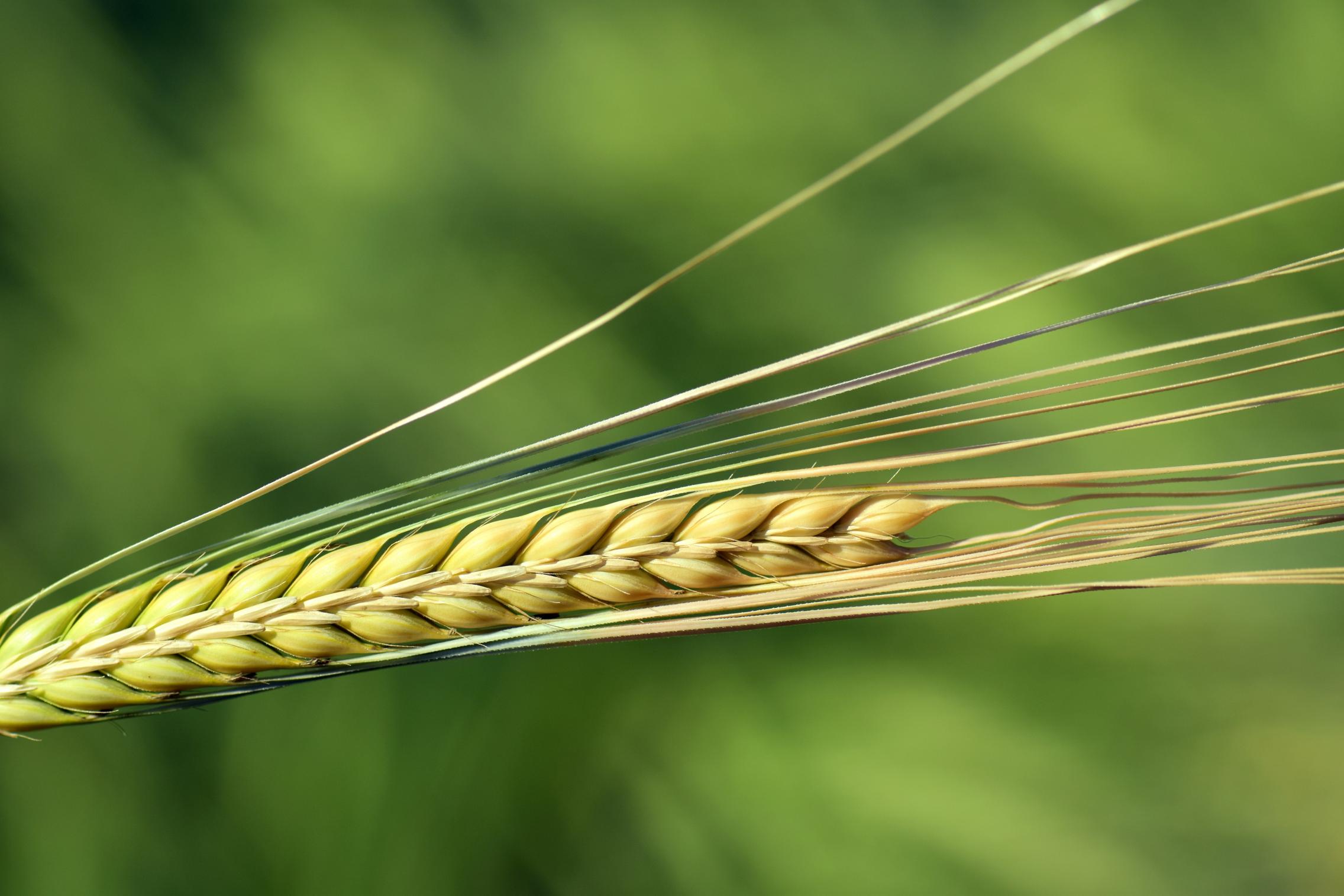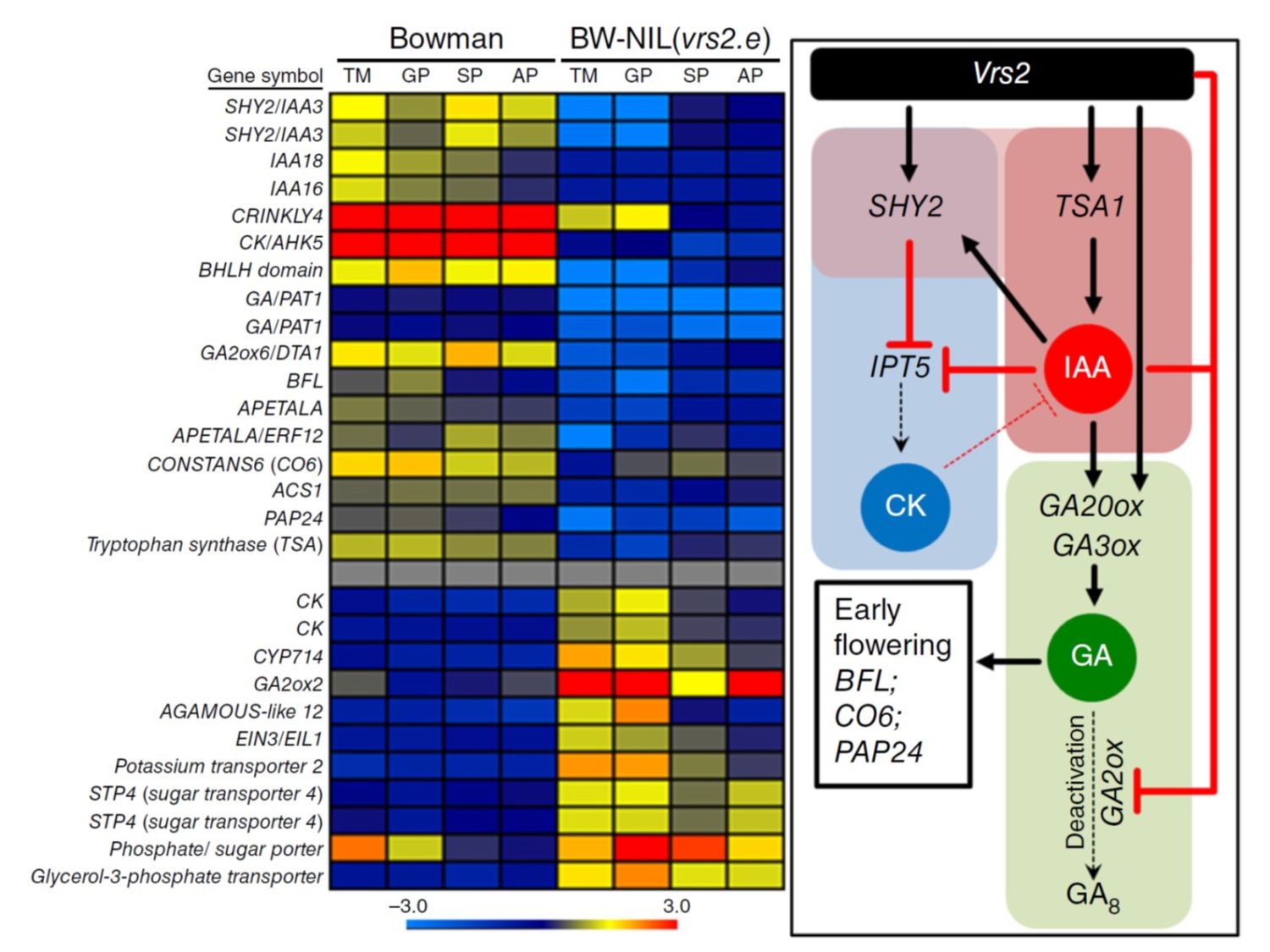
Inflorescence Spikelet
floral development may not continue. Floral development in wheat and barley thus resembles a two-phase system, with the initiation of spikelet primordia on the apex, which is then fol-lowed by floral morphogenesis only if external and internal conditions are favourable (Aspinall, 1966). These earlier physiological studies of shoot apex develop-

Edit free photo of Barley,spike,cereals,barley field,grain
Barley (Hordeum vulgare), a member of the grass family, is a major cereal grain grown in temperate climates globally. It was one of the first cultivated grains, particularly in Eurasia as early as 10,000 years ago. Globally 70% of barley production is used as animal fodder, while 30% as a source of fermentable material for beer and certain distilled beverages, and as a component of various foods.

Barley
Barley has a diploid chromosome number of 14 and is self-pollinating. In 2016/2017 barley production worldwide was 145 million metric tons. This puts barley in fourth place in terms of production behind corn, wheat, and rice. The main barley producing countries are Russia, Germany, France, Ukraine, Australia, and Canada (Fig. 1). Barley is a.

Transcriptional landscapes of floral meristems in barley Science Advances
5 Citations Abstract Barley, like other plants, is highly variable. Varieties differ greatly in their morphological and other characters, and a wide variation of characters occurs in 'pure races'. When a character is quantified for a group of plants this number is usually some sort of an average. A wide range of individual values will occur.

Barley Free Stock Photo Closeup of barley growing in a field 11699
flowering and fruiting part of the plant. The floral organs of barley, as of other grasses, are different from those of ordinary flowering plants, though the essential sexual parts are the same. The unit of the inflorescence is the spikolot, which may contain only one flower, as in barley, or several, as in wheat.

Flower morphology of the three barley lines, maintainer (cv. Adorra),... Download Scientific
The flowers, group together in a central axis or rachis which is composed of nodes and internodes, which bears a group of three spikelets. Spikelets have only one flower. Each barley floret comprises of lemma, palea, lodicules, androecium and gynoecium in the model proposed by Forster et al. . As described in the section "types of barley.

Poaceae. a Generalized (threeflowered) spikelet. b Flower (lemma... Download Scientific Diagram
1. Structure of barley Source publication Chemical Composition in Barley Grains and Malt Quality Chapter Full-text available Jul 2010 Glen Patrick Fox Barley is used for a wide range of.

The Bookseller News Barley to step down as director of Edinburgh International Book Festival
barley, ( Hordeum vulgare ), cereal plant of the grass family Poaceae and its edible grain. Grown in a variety of environments, barley is the fourth largest grain crop globally, after wheat, rice, and corn. Barley is commonly used in breads, soups, stews, and health products, though it is primarily grown as animal fodder and as a source of malt.

Brew True Back To Basics Barley
A spike inflorescence is formed by coordinated cell divisions of the inflorescence meristem (IM) that acropetally produces axillary meristems, each subtended by a leaf meristem forming so-called double ridges (DRs; Fig. 1A ). DR formation constitutes the first visible reproductive structures during early spike development.

Exploring the function of MADSbox genes in barley inflorescence development Faculty of
Barley ( Hordeum vulgare) is a plant of the Poaceae family. It is a cereal, like oats, rice, wheat or corn. Traditionally, barley fruits have been used to feed animals. Barley has been very important for agriculture and it still continues being so, just think that is the cereal that has a higher production after wheat, maize and rice.

Hulled barley milling process diagram and photographs, steps 7 to 10... Download Scientific
Summary This chapter focuses on the cultivated species of Hordeum vulgare L ., which includes both the six-rowed and two-rowed types. It discusses the morphology and anatomy according to the various plant parts: seed, roots, shoots, flower, and mature spike.

RBSE Solutions for Class 11 Biology Chapter 25 Families of Angiosperms SabDekho
A new study finds that regulation of hormone levels during development is crucial for determining the arrangement of flowers on a barley inflorescence, opening new doors for increasing grain yield.

Plant Minerals, Heavy Metal Detox, Barley Fulvic Barley
or rye (Weibe, 1979). Barley is sensitive to winter conditions and will die if the temperature drops below 17° F (Hannaway et al., 2004). Barley cannot tolerate poorly drained soil, grows well when pH values are between 6.0 - 8.5 (Midwest Cover Crops Council, 2012), and has been used to reclaim saline soils (Hannaway et al., 2004).
Foxtail Millet Plant Diagram
Barley possesses an indeterminate "spike"-type inflorescence that forms basic floral structures, called spikelets, in a distichous pattern along its central axis (termed rachis). Each rachis node.

Cereals Education Cereals Kids Barley Plant, Rice Plant, Wheat Tattoo, Cereal Plant, Types Of
(A) In wild-type barley, the developing inflorescence consists of one central determinate spikelet (CS), which contains a lemma (Le, blue) and a palea (Pa, red) that enclose floral organs. The bdi1 mutant forms an indeterminate CS with extended branches, and thickened cell walls form within the palea (Poursarebani et al., 2020). (B) In rice, a mutation in OsREP1 forms a smaller palea (Yuan et.

Plantae Hormonemediated inflorescence patterning in barley () Plantae
THE grass leaf develops from a primordium, which grows out from the shoot apical meristem. At later stages of development, the primordium generates files of cells that either extend from the base to the tip of the leaf or produce stem internode tissues (Poethig 1984).The mature leaf consists of the sheath, the blade, and the border between these two domains, the so-called auricle-ligule.